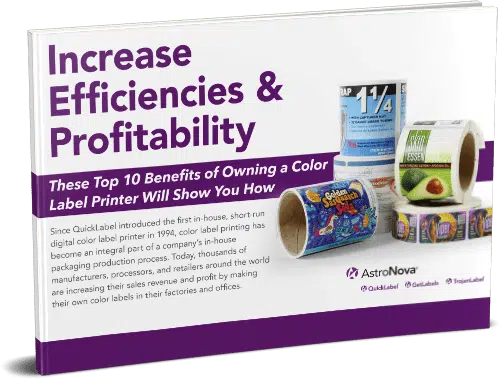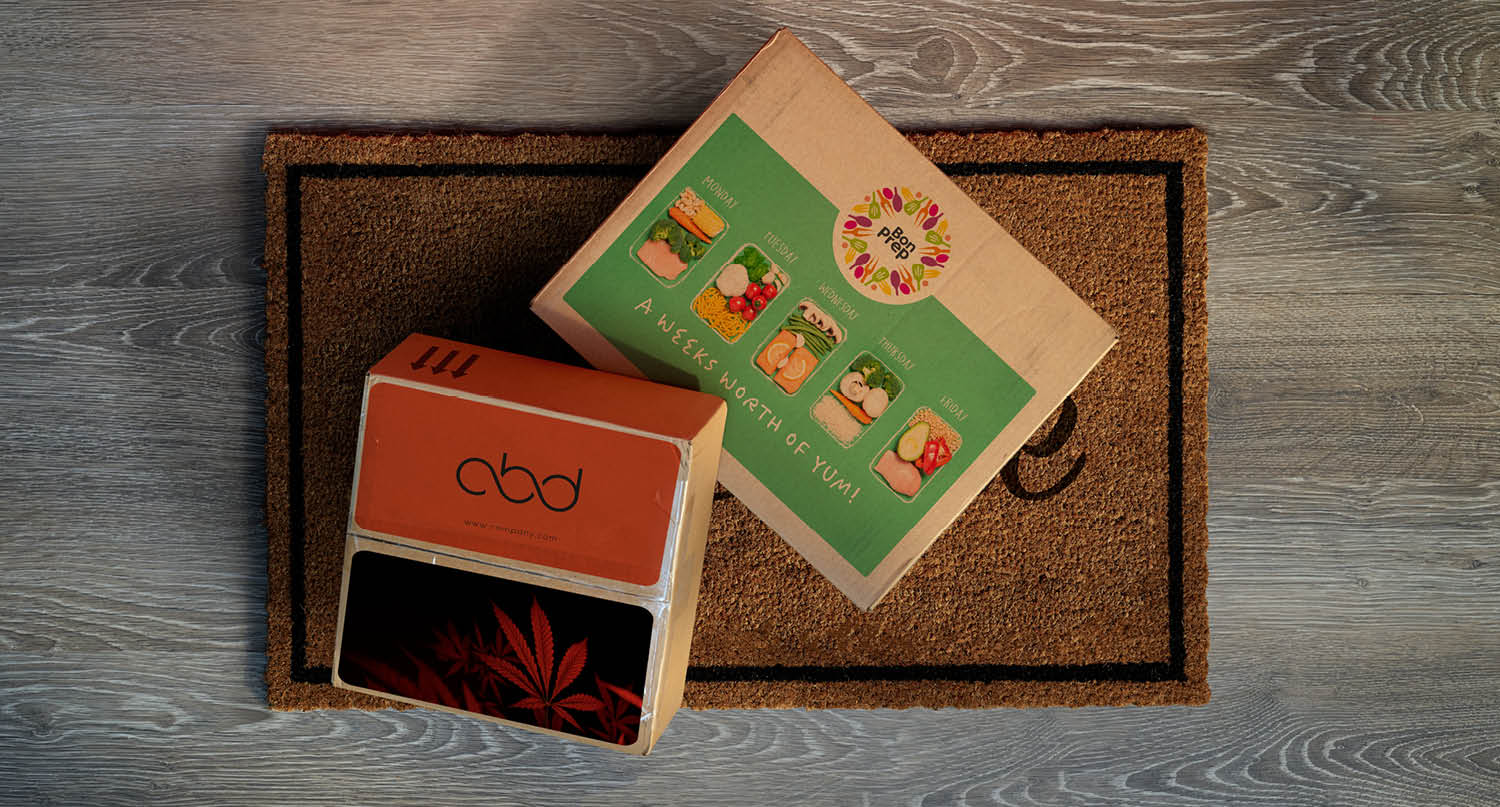
As detailed in recent articles here and here, package redesign continues to be heavily influenced by megatrends shaping the packaging industry.
As a quick overview, megatrends are powerful, transformative forces that can change the trajectory of an industry by shifting priorities and redefining business models. Sustainability and a general environmental concern have consistently been a rising megatrend influencing product packaging for several years now. There are increasing levels of regulatory action globally that is motivating manufacturers to adopt sustainable packaging materials.
Breaking Down the Research
In October 2021, Acosta, a sales and marketing company for consumer-packaged goods, released a Shopper Community Survey. Results reflected two significant findings relevant to packaging professionals: 80% of shoppers have made it a priority to reduce, reuse, and recycle products and packaging, and 60% of shoppers are paying more attention to product packaging and its impact on the environment.
60% of shoppers are paying more attention to product packaging and its impact on the environment
As manufacturers and shippers adapt their strategies and rethink packaging, package designers face challenges of assimilating these megatrends and producing optimized ship-ready package designs.
Emerging Ship-Ready Package Concepts
McKinsey, a large consulting firm, produced a well-researched report in 2020 called “Beyond COVID-19: The Next Normal for Packaging Design”. Exploring some of the concepts of this report, various packaging concepts and essential features include different types of boxes, cartons, cases, envelopes, and mailers. This report also details the importance of merging primary and secondary packaging, highlighting the growing importance of external packaging for brands.
E-Commerce Led Growth in Packaging
One of the biggest trendsetters regarding shifts in packaging is Amazon. It would be seemingly impossible for such an upheaval in product packaging without the most prominent online retailer involved.
While Amazon has had its FFP (frustration-free packaging) program, which entails recyclable packaging without excess materials, in place for over a decade, it expanded these efforts in late 2019 with mandatory compliance requirements. Of particular interest are their top two tiers: FFP and SIOC, which allow sellers to ship products in their own branded packaging, compliant to the Amazon ISTA 6 standard. To increase compliance, there are financial incentives and penalties in place, indicating how critical Amazon believes these programs are to its success. It’s worth noting that there are several key players in e-commerce with similar programs, reinforcing the importance of these programs.
Why?
Why are they doing this? – Simply put, to avoid product damage, reduce waste and shipping costs, and meet sustainability and recyclability goals.
You don’t have to be selling to large retailers, online or otherwise, to see the economic benefits this strategy provides. Even if you identify as a small business without a large volume of SKUs, the benefits from adopting these strategies are immense.
Even if you identify as a small business without a large volume of SKUs, the benefits from adopting these strategies are immense.
Fortunately, digital printing technologies enable full-color, short-run printing with quick turnaround times, making these programs and benefits accessible. But, how?
How?
As packaging professionals create these redesigns, they’re faced with ensuring the brand experience for consumers is not lost in these revamped designs.
Below is a breakdown of the typical expectations brand professionals face as their product package designs across SKUs go through this dramatic transformation process. Small and medium brands, e-tailers, contract manufacturers, and co-packers have this acute need to print on packages in short runs.
- You must be able to *post-print on a variety of different package types
- Ideally, the printing should not be preceded by any coatings or pre-treatments of any kind, as that increases cost and complexity
- You should be able to print in full color, so an ideal solution at least includes a CMYK process with a decent color gamut
- The minimum order quantities must not be prohibitively high for each package SKU
- Shorter delivery times as speed is critical for the success of these businesses
*Post-print, for these purposes here, refers to printing on pre-formed or pre-converted boxes, bags, or mailers, also known as “direct printing” or “overprinting.” This is different from pre-printing on blank materials and later converting them to the desired box or bag type. That is done on large presses, not ideal for short runs or quick turnaround times.
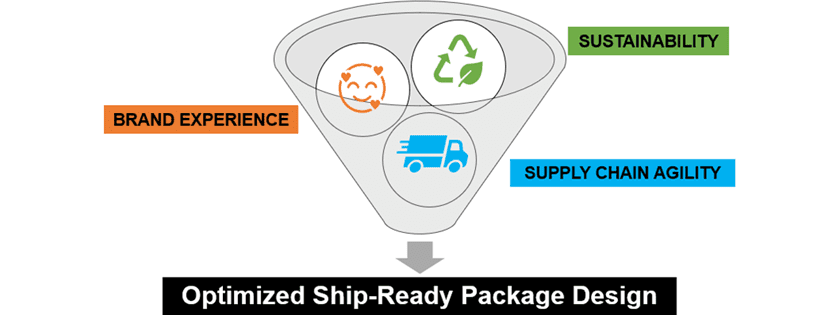
The Solution
Like with anything, there are typical challenges associated with preserving or enhancing the brand experience when you adopt ship-ready package designs. Our personal buying experiences have shown us that ship-ready bags, boxes, cartons, and mailers have a great deal of variability. They may vary by type, shape, size, thickness, weight, and quantity. Regardless of packaging style, these all require printing to ensure product compliance and enhance branding. Printing color on each of these substrates is possible, but typically each type of substrate may require a specialized press, sometimes with multiple process steps. Attempting to print on all these package types using conventional means may result in a warehouse full of different equipment. An ideal solution would be a single solution – a single piece of equipment that allows printing on various paper-based packaging.
An ideal solution would be a single solution – a single piece of equipment that allows printing on various paper-based packaging.
Leading Direct-to-Package Solutions
AstroNova offers robust, industrial-grade digital printing solutions providing longevity and reliability with excellent print economics. Ideal for emerging ship-ready concepts, our direct-to-package solutions offer versatility required for a variety of packaging concepts and quick turnaround times to meet rapid-fulfillment needs of your business customers.
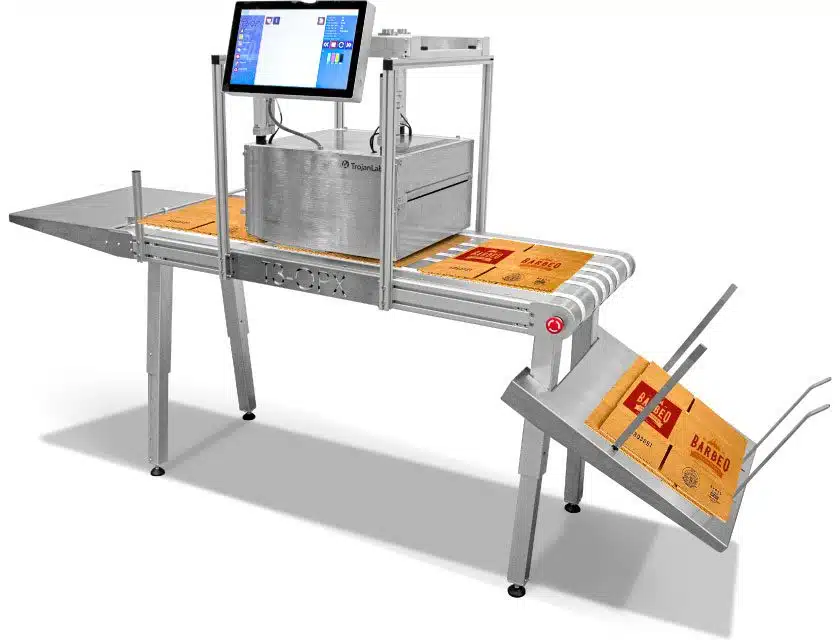 TrojanLabel T3-OPX |
 AstroJet AJ-800 |
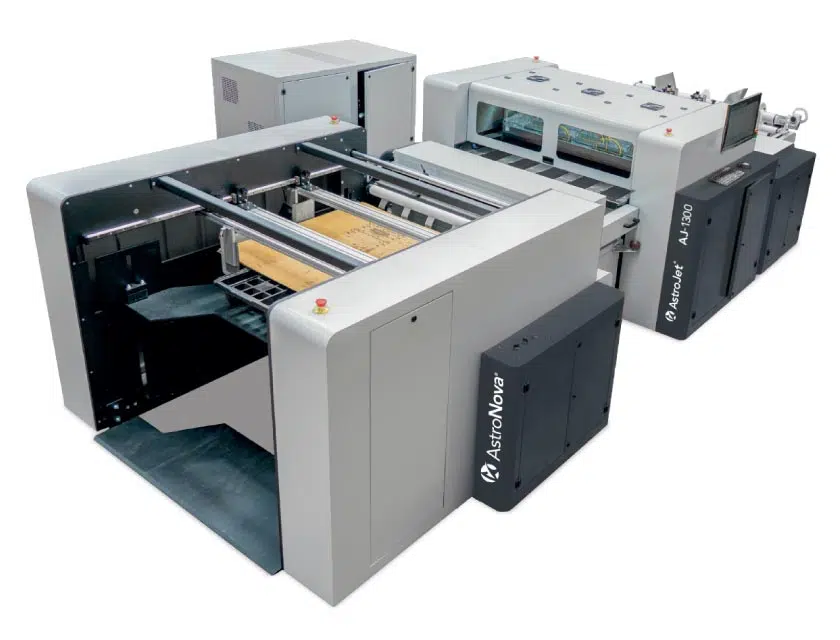 AstroJet AJ-1300 |
|
|---|---|---|---|
| Segment | Entry-Level (<$60K) | Value (<$100K) | Production (<$300K) |
| Technology | Water-based Inkjet | Water-based Inkjet | Water-based Inkjet |
| Ink type | CMYK Pigment (230 ml cartridges) |
CMYK Pigment or Dye (5kg Gallon Jugs) |
CMYK Pigment or Dye (5kg Gallon Jugs) |
| Max. Print Resolution | 1200 x 1200 dpi | 1200 x 1200 dpi | 1200 x 1200 dpi |
| Max. Print Width | 11.7” (297 mm) | 17” (432 mm) | 42” (1066 mm) |
| Max. Feed Width | 39.4” (1000 mm) | 31” (787 mm) | 51” (1300 mm) |
| Max. Print Speed | 18 ips (27 m/min) | 18 ips (27 m/min) | 18 ips (27 m/min) |
| Ink Cost | Low | Very Low | Very Low |
| Max. Media Thickness | 95 mm | 203 mm | 50 mm |
| Applications | Postcards, flat corrugated boxes (brown or white), wooden planks, blister envelopes, mailers, paper bags, etc. | Paper bags, flat corrugated boxes (brown or white), mailers, subscription meal boxes, produce boxes, etc. | Flat corrugated boxes or sheets (brown or white) |
| Software/User Interface | TrojanControl UI with Windows Driver, Optional RIP Software | RIP software with Color Management, Color Matching and Hot Folder workflow | RIP software with Color Management, Color Matching and Hot Folder workflow |





